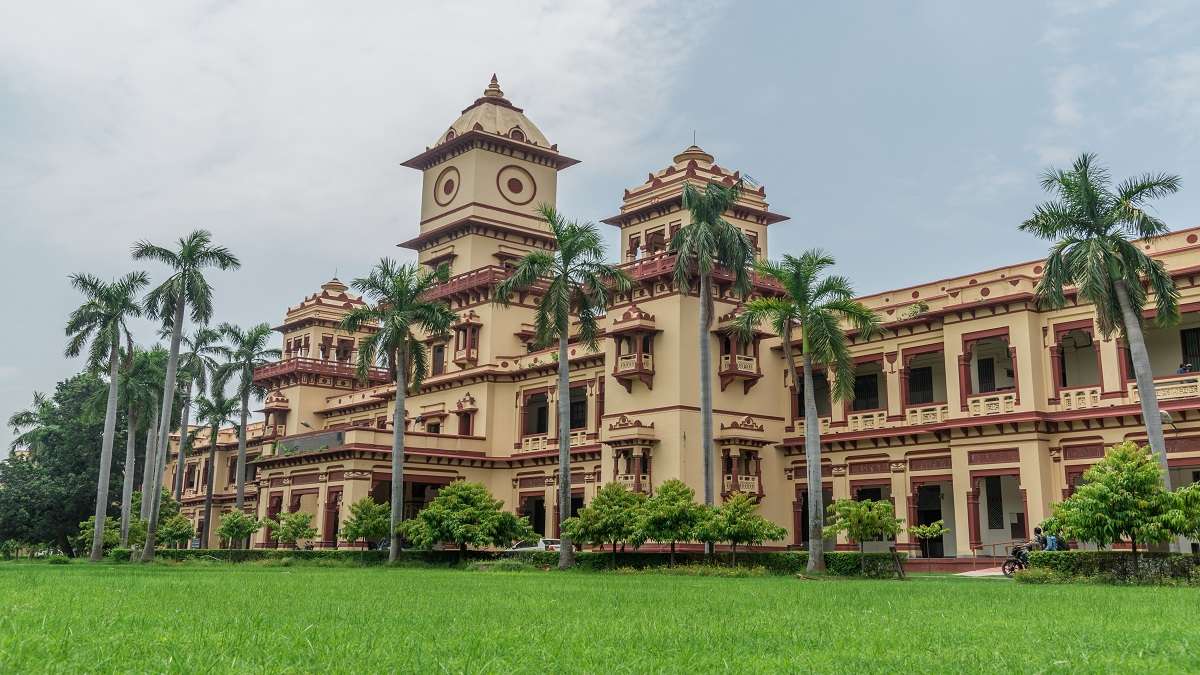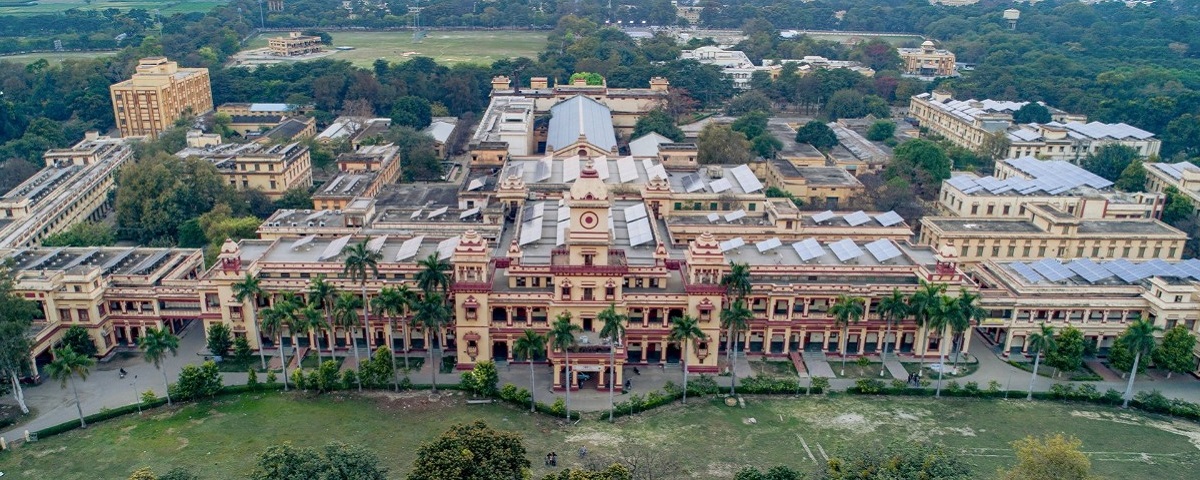


BANARAS HINDU UNIVERSITY (BHU)
Banaras Hindu University (BHU) is the largest residential university in Asia with over 30,000 students residing in the campus. It was established in 1916 by Madan Mohan Malaviya, with co-operation from Annie Besant.
BHU is located on the southern part of Varanasi, near the banks of the river Ganga. The main campus is spread over 1,300 acres (5.3 km2). Started in 1916 on land was donated by the then Kashi Naresh Prabhu Narayan Singh. The campus layout approximates a semicircle, with intersecting roads laid out along the radii or in arcs. Buildings built in the first half of the 20th century are fine examples of Indo-Gothic architecture.
The campus has over 60 hostels offering residential accommodation for over 12,000 students. On-campus housing is also available to a majority of the full-time faculty.
The main entrance gate and boundary wall was built on the donation made by Maharaja of Balrampur, Maharaja Pateshvari Prashad Singh.
The Sayaji Rao Gaekwad Library is the main library on campus and houses over 1.3 million volumes as of 2011. Completed in 1941, its construction was financed by Maharaja Sayajirao Gaekwad III of Baroda. In addition to the main library, there are three institute libraries, eight faculty libraries and over 25 departmental libraries available to students and staff.
Sir Sunderlal Hospital on the campus is a teaching hospital for the Institute of Medical Sciences. Established in 1926 with 96 beds, it has since been expanded to over 900 beds and is the largest tertiary referral hospital in the region.
NEW VISHWANATH TEMPLE
Situated in the premises of Banaras Hindu University, a modern place of worship planned by Madan Mohan Malviya and built by the Birlas. Open to all, irrespective of caste or creed.
Shri Vishwanath Mandir has the tallest temple tower in the world.
It is the most prominent landmark, located in the centre of the campus. The foundation for this 252 feet (77 m) high complex of seven temples was laid in March 1931, and took almost three decades to complete.
Bharat Kala Bhavan is an art and archaeological museum on the campus. Established in January 1920, its first chairman was Nobel laureate Rabindranath Tagore, with his nephew Abanindranath Tagore as the vice-chairman. The museum was expanded and gained prominence with the efforts of Rai Krishnadasa. The museum is best known for its collection of Indian paintings, but also includes archaeological artifacts, textiles and costumes, Indian philately as well as literary and archival materials. The Alice Boner Gallery was also set up at Bharat Kala Bhavan with the assistance of the Alice Boner Foundation in 1989 to mark the birth centenary of Alice Boner.
Foundation Day –Vasant Panchami
BHU observes Saraswati puja day (also known as Vasant Panchami) as its foundation day. Goddess Saraswati is the Hindu goddess of knowledge, music, arts, wisdom and nature. She is a part of the trinity of Saraswati, Lakshmi and Parvati.
There is also a festival called SPANDAN (Inter university youth festival). Students represent their faculty/institute in various arts competition like literature (writing essay, poem, and debates), painting, sketches, vocal music, dancing, singing, drama, and mimicry. It is held every year after Vasant Panchami in the month of February or March.







